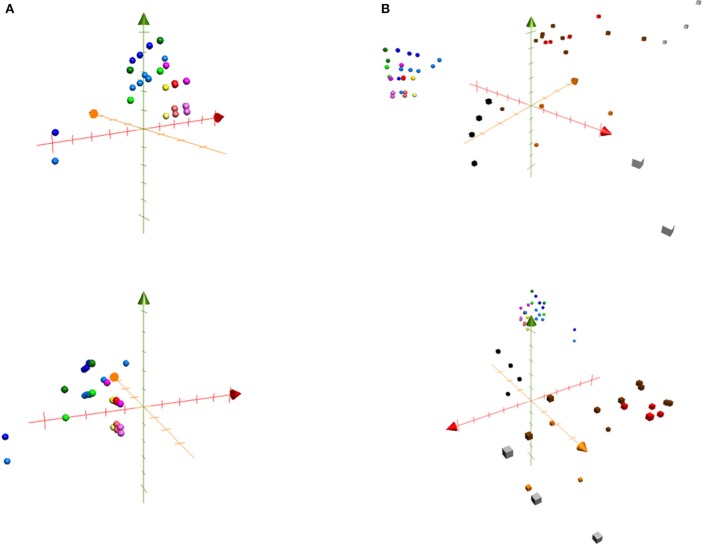Figure 3.
ChemGPS-NP analysis of long-chain fatty acids. The isolated fatty acids from Typhonium blumei together with series of saturated, unsaturated and oxygenated fatty acids were plotted into the three dimensions consisting of PC1 (principal components 1; red; represents size, shape, and polarizability), PC2 (orange; aromatic- and conjugation-related properties), and PC3 (green; lipophilicity, polarity, and H-bond capacity). (A) The plots represent saturated fatty acids (blue dots), unsaturated fatty acids (green dots), saturated oxygenated fatty acids (purple dots), monounsaturated hydroxy fatty acids (red dots) and diunsaturated hydroxy fatty acids (yellow dots). Acids are shown in a light tone, while methyl esters in dark tone of the corresponding color. Diunsaturated fatty acids and methyl esters (yellow dots) were found to exert the best anti-allergic activity (1, 2, 9(S)-HODE). (B) The following clinically used anti-allergic drugs were plotted into chemical space: glucocorticoids (black squares), immunosuppressants (white squares), leukotriene inhibitors (gray squares), mast cell stabilizers (orange squares), antihistaminics (brown squares) and “dual antihistaminics” known to inhibit mast cell degranulation (red squares).

